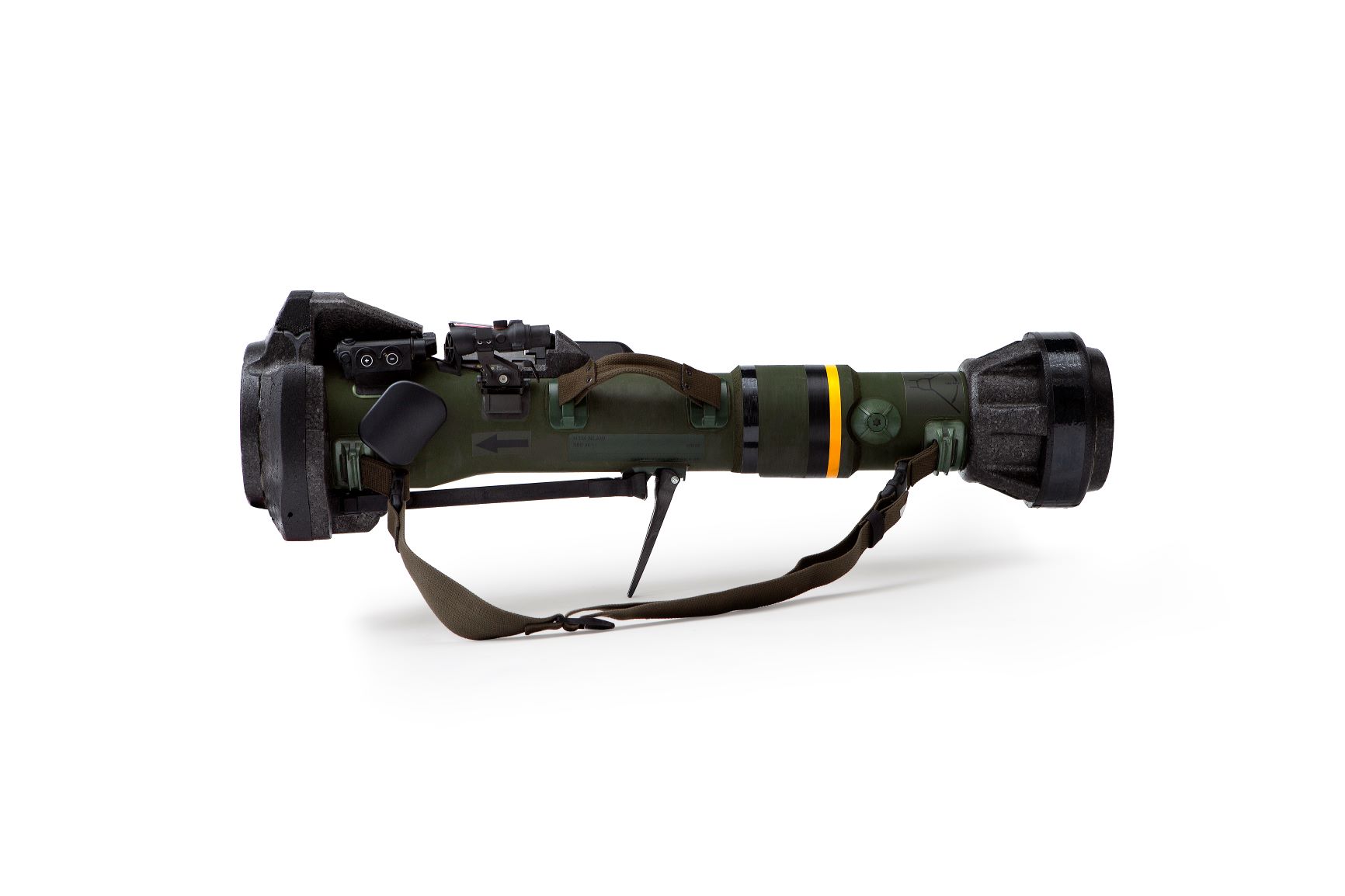
SHAH ALAM: Third time lucky. It appears that the Defence Ministry is looking to find another multi-modal transport operator (MTO) to ship the Saab NLAW anti-tank weapon from Sweden. This is based on a request for bid for the MTO for the service published on the Finance Ministry eperolehan website today.
The tender notice:
PELANTIKAN MULTIMODAL TRANSPORT OPERATOR (MTO) BAGI PEROLEHAN MEMBEKAL DAN MENGHANTAR NEXT GENERATION LIGHT ANTI TANK WEAPON (NLAW) UNTUK TENTERA DARAT
The selected MTO provider will need to transport the NLAW – likely in one container – from the port of Varberg, Sweden to the 93 Depot Pusat Peluru, Kem Mempaga, Pahang. This is the same destination for the other two tenders.
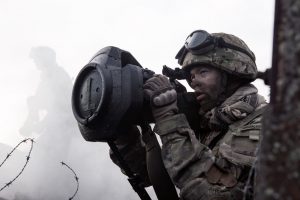
This is likely the third time that the ministry is looking for the MTO to ship the weapons from Sweden. The first one was in 2018 and the second one was two months ago. I have no idea whether the latest request for bids means that is the third batch of NLAWs for the Army.
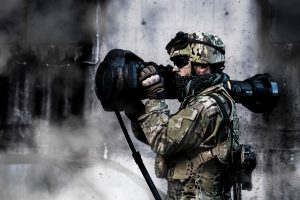
Or simply the first and only batch and the other two MTO tenders had failed. I am pretty sure that the 2018 one was not shipped to Malaysia as we had not prepared the export license on time. I am hopeful though the latest tender is for at least the second batch of NLAWs for the Army, so we have enough stocks to distribute to all of its units instead of just enough for for the GGK and 10 Para Brigade.
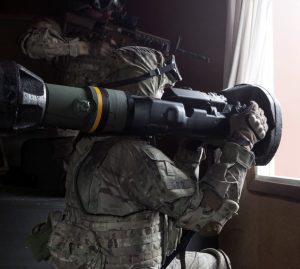
Hopefully we will get some clarification on the NLAW order in the near future though it is likely will only be some clarity next April, during DSA 2020.
— Malaysian Defence
If you like this post, buy me an espresso. Paypal Payment

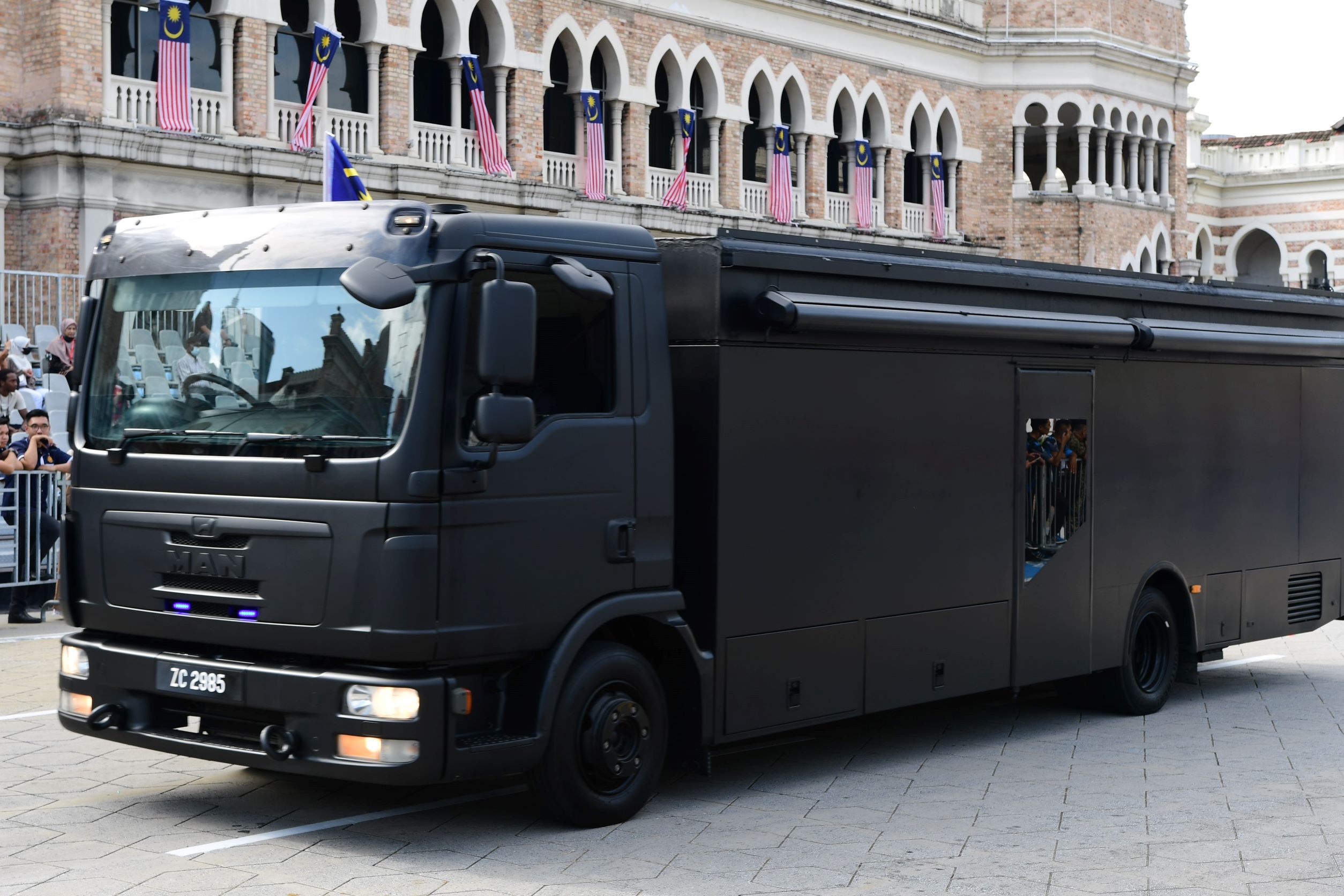
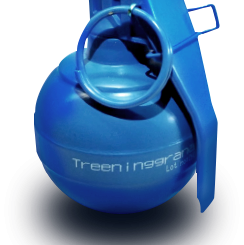
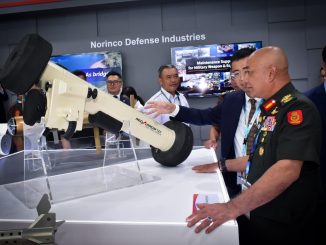
You can fit 1teu container in a A400M. So why not just send one to pick up the NLAWs? Our pilots needs the flying time anyway. If we can send the A400M for a few players to play friendly cricket recently (yes really) why not to pick up the NLAWs?
Reply
Don’t think RMAF wants to use its OE funds to carry Army stuff when it could be done much cheaper by a commercial company. The Thailand trip was part of an operational mission
Thanks for the news.
Finally a top attack atgm for our military. Its shorter range wont matter much if use correctly in urban or jungle environment.
really hope this is the second batch of the NLAW and not the old one….at least it will be a good news for army..
Mr marhalim, any news on MD530G or it still unknown??
Too bad MAS doesn’t fly direct to Sweden. They could have helped with some ‘national service’ contribution.
Do armies regularly ship live armaments by commercial transporters?
Reply
Yes, and usually it is part of the contract itself though we always used our own MTO
“Finally a top attack atgm for our military. Its shorter range wont matter much if use correctly in urban or jungle environment.”
The value of light weight systems is to give foot mobile elements some means of anti-tank defence. They are not a substitute for heavier, longer ranged systems like Ingwe. Ideally those should have a top attack capability as well, considering the improving quality of regional armour.
These NLAW would boost army’s anti tank capability because not only that it has fire and forget capability, it is also our only shoulder launched ATGM after Eryx was retired some time ago
To add to our anti tank capability (especially shoulder launched ones), the army should consider acquiring guided munitions for Carl Gustaf as we also been acquiring more Carl Gustaf as well
Nihd- “use correctly in urban or jungle environment”
In a strictly jungle environment such weapons may not be able to be used effectively due to vegetation. In such places even throwing grenades have to be thrown carefully lest they hit a branch and bounce back to the thrower. Another point is that such an environment may not present ideal targets for MBT LAW or stuff similar to it.
Zulkhairi Ghazali,
Even in times of war or the period leading up to across hostilities; its normal for countries to use commercial shipping/aircraft to move men, ammo and heavy equipment. We’ve seen this in numerous conflicts including the Gulf War, Iraq invasion and Afghanistan.
@AM
Yes agree with you. From what i see, atgm for bis support company should be either the mbda mmp or lig nex1 raybolt.
Saab NLAW should be for SF and 10th para i believe.
Just my sekupang.
Currently what we have
RPG-7s at section level
Carl Gustav Mk1
M72 LAW – replacement for C90?
NLAW – replacement for Eryx
Bakhtar Shikan – for Mech support companies
Metis-M – 7th Brigade motorized infantry support companies (not seen for at least a year)
Ingwe – Gempita armoured cavalry
For future ATGM (2021-2030), I would like to see the Metis-M and Bakhtar Shikan be replaced by the korean Lig Next1 Raybolt, which has a top attack capability.
Photo of the new Raybolt twin launcher
http://photo-3-baomoi.zadn.vn/w1000_r1/2018_10_16_106_28173995/4690eefcb4ba5de404ab.jpg
Recapitalisation of carl gustav would also be a good choice, going for the new lighter versions of the legendary carl gustav.
Nihd – “Saab NLAW should be for SF and 10th para“
There is no reason why standard infantry battalions can’t also be issued with NLAW; especially if operating mostly on foot and weight and bulk is an issue and operating in restricted terrain where engagement ranges tend to be short.
….
The Gustavs are operated by Support Companies and also by the RMN in the Spratys. Unless we’ve actually bought newer rounds or sent the ones we have back to POF to be worked on; the Bakthar Shikans should be time expiring soon.
Irrespective of one’s personal preferences it’s really immaterial what we buy as long as it’s non SACLOS, has a top attack function (as well as a direct attack mode) and preferably has a tandem warhead. Just as importantly it has to be something we can afford to buy in numbers and something that won’t wear out fast in our heat and humidity; especially if stored in the field for prolonged periods.
Actually the Carl Gustav company had come out with several types of ammunition. Apart from the shaped charge warhead, they have tandem head shaped charge now, aerosol explosive-the so called air fuel explosive, ordinary high explosive to make the weapon more multicapable instead of mainly anti tank. Also there is the buck shot for anti infantry
I like the raybolt because it is one of a few with a purposely designed twin launcher. So in emergency you can attack another target immediately and not worry about reloading. The purposely designed turret would be nice to have atop of an adnan/mifv or JLTVs.
http://2.bp.blogspot.com/-Nga1UuvtZUk/W8dieRDHd-I/AAAAAAAAdTk/-9W8oL7ZM1IxISIhGKwJBxjCDhRjJb5TQCLcBGAs/s1600/K153c%2BATGM%2Bcarrier.jpg
@ lee yoke meng
Carl gustav company? You meant SAAB?
The problem with going 3rd party is their need to get permits to transport military gear and moreso weapons. While much of the journey will be via commercial freight methods, it is the hassle of permits, extraordinary insurance & liability cover, security and others which makes such a deal unprofitable if the Government is pressing down on the price at the other end. And the logistic coordination must be spot on and the info pertaining to the transhipment of weapons be communicated and agreed upon at each transit point, this is more than just critical if it goes thru shipment hubs. Otherwise, if someone within the chain drops the ball, it could get stuck at neutral hub countries that are particular with weapons shipment (ie SG Terrex got stuck in HK port for months). If the 2 earlier bids failed to materialise, this could have been why.
“Actually the Carl Gustav company had come out with several types of ammunition… Also there is the buck shot for anti infantry”
WHOA!
At this size, it could probably be called canister.
“I like the raybolt because it is one of a few with a purposely designed twin launcher. So in emergency you can attack another target immediately and not worry about reloading.”
Then you’ll love the mounted Kornet-D system- 8 missiles mounted on 2 masts per Tigr chassis. It appears that both masts can engage separate targets simultaneously, which is probably unprecedented. The latest versions of Kornet have top attack and fire and forget capability, and a pretty long range.
Just had to share these Peruvian Kornet mounts. You might recognise the hull:
https://i.pinimg.com/originals/aa/9a/58/aa9a5864b29e913c9e0d308372e754ac.jpg
https://i.redd.it/13nobeumxte31.jpg
I don’t think we need to get rid of Baktar Shikan or Metis-M. They’re not obsolete. If anything, we should expand on our existing anti tank capability to include stuff like 3rd gen atgm with top attack capability. Next thing, if the army is still pressing on light attack helo, the army could use Ingwe missile as well
We used to have our indigenous anti tank missile but nothing came out of it past prototype stage. It’s one of the things we should put our R&D money on, along with stuff like manpads and RCWs
…. – “ like the raybolt because it is one of a few with a purposely designed twin launcher””
Just like how AMOS has twin tubes. The problem is many potential users found such an arrangement superfluous to operational needs.
…. – “, going for the new lighter versions of the legendary carl gustav””
I’m all for it given it’s much more accurate than shoulder launched weapons and that unlike shoulder launched weapons can fire smoke and ilium; which admittedly is something that can also be done by the Milkors at section level.
dundun – “I don’t think we need to get rid of Baktar Shikan or Metis-M. They’re not obsolete”
Define “obsolete”. If compared to newer gen non
SACLOS stuff which have a top attack attack capability then both are by the very definition of the word “obsolete” but doesn’t necessarily mean are not needed. Bakthar Shikan is a copy of the Red Arrow which in turn is based on TOW 1. We don’t have many of them and I’m not sure if we operate the tandem warheads which POF displayed at DSA as far back as 2002.
If indeed we can’t afford to buy new gen systems in numbers then I guess a solution would be to also have older gen cheaper systems. They may not have the same penetrating ability as newer gen stuff but used correctly (Soviet/Russian doctrine calls for multiple ATGW and shoulder fired weapon hits to maximise the kill probability – Hezbollah, the Chechians and Tajik rebels employed the tactic) can cause damage to even up armoured MBTs; even if penetration is not achieved; damaging or disabling periscopes and panoramic sights result in a “blind” vehicle; not to mention the possibility of achieving a mobility kill.
Dundun – “We used to have our indigenous anti tank missile””
If you’re referring to the weapon that was displayed at Merdeka Day years ago and the one that was verboten to talk about; it was a guided arty round and not “indigenous”; based on Krasnapol and also having a Chinese element.
@ AM
The kornet-d is a remotely operated launcher. The raybolt is a manned one. Anyway kornet is more of the size of ingwe, with nearly 8km range. The ATGM launcher is repurppsed AMX-13s.
@ dundun
Not to get rid, but replace when they are expired. Our eryx has expired, i suspect the metis-m has expired too as it has been miasing from the firepower displays.
@ azlan
AMOS is a mortar. We do have multiple missile launchers in our arsenal, the djigit launcher for igla and LML NG for starstreak to name a few. I believe an ATGM with twin launcher would be good for our IFVs and fire support units.
http://pds21.egloos.com/pds/201809/28/60/f0205060_5badab221aea0.jpg
The cost of Raybolt? From a placard at a korean army open day:
Twin launcher USD128k
Missile USD37k
Dundun – “ype stage. It’s one of the things we should put our R&D money on, along with stuff like manpads and RCWs””
Why? Are we going to reach a stage where we can develop MANPADs (assuming we have the technology for the guidance systems, propulsion, etc) which are price competitive enough to be bought in numbers by foreign customers? What advantage – either technically or price wise – would our MANPADs have for foreign customers to want to buy them rather than from China. Russia, Pakistan (all countries which have a larger domestic market) and a number of other countries that offer high performing systems that are cheaper than Western equivalents? Unless we can export any MANPADs we produce in numbers and unless we can sell them by the hundreds to the army, RMAF and RMN (unlikely) we won’t be in a position where we can be price competitive.
It’s great to talk about self sufficiency and local
production but in the long run it must have tangible benefits.
Our southern neighbour also has a twin ATGM launcher. This is their self-designed launcher for Spike-MR ATGM.
http://2.bp.blogspot.com/_FVeEhhTjSXI/TQ3wSkE0qsI/AAAAAAAAAX4/RQTflKKMfJs/s1600/0027.res.jpg
My reason is this; When the neighbors invested in hundreds of tanks, armored vehicles as well as attack helicopters and even new jets, do you want to keep with the Joneses and do the same thing, or would you rather invest in countermeasures like anti tanks and Manpads?
When the DWP already mentioned about “determiningg the direction” of the national defence industries, would you rather see us do R&D in stuff like say, malaysian made tank or would you prefer do R&D in something more pragmatic and have biggest bang for bucks?
About the cost, Of course, it’s a production 101, of course initial batches will be more expensive because they’re going to absorb R&D cost but guess what, it takes money to make money. These Manpads could replace Anza, Igla and even arm the LMS (as well as the mmea’s OPVs and NGPVs.Yes they didn’t have any air defenve beyond the secondary gun) while RCWs could arm whatever 6×6 we would get as well as any other patrol vessels in the navy, mmea and marine police so there’s the initial market for you. Doesn’t sounds so little now does it.
Hell if the government is willing to absorb 1.4 billion ringgit overruns in LCS (or as what mat sabu says it, kahwin janda anak satu), we might as well as absorb these R&D cost,at the very least is is plenty more tangible and has more potential for export than the 6 ships we paid the IPs for when we could just get a updated, enlarged version of Meko 100, which we also paid the IPs, armed it to the teeth and be done with it.
“Our southern neighbour also has a twin ATGM launcher. This is their self-designed launcher for Spike-MR ATGM.”
That image is of the old LSV. Those launchers have been transplanted to a new vehicle, also designated LSV. Only operated by Guards units and deployed underslung by helicopters.
The Terrex ICV has a Spike firing post variant. I have not seen it personally or in photos, but I remember seeing a CGI at an SAF event depicting a single tube mount.
Hunter IFV has a pop up launcher with two tubes.
“Just like how AMOS has twin tubes. The problem is many potential users found such an arrangement superfluous to operational needs. ”
ATGMs are direct fire weapons so the idea with twin tubes is to fire and displace quickly. Twin or single tube automated mortars are intended more to provide a heavier or faster initial response and often to reduce the number of systems and crew.
…. – “AMOS is a mortar””
I’m very aware of that thank you. Was just pointing out that some customers don’t have a need for such an arrangement.
With regards to twin tube ATGWs if it’s going to be mounted on a vehicle then yes I see a utility for it but there are various systems that are offered in such a configuration. The issue with twin launch missiles – whether an ATGW or MANPADs – is that although another ready to fire missile comes in handy; ultimately only one can be fired at any given time, simultaneously (unlike AMOS) and ideally there would also be another launcher (as is standard practice) in place tracking the same target.
@ azlan
“Was just pointing out that some customers don’t have a need for such an arrangement”
Okay, yes some other customers dont have a need for such an arrangement. But lets talk about malaysia as the customer. This is our current ATGM mounted on IFV. look at how unergonomic the operator has to be when shooting the ATGM.
http://2.bp.blogspot.com/-NSRlADYe-5o/Wo_BUisn-uI/AAAAAAAAdaU/P2mtos-xCqUVGeybxd-J7mHeeb86pdMlwCLcBGAs/s1600/IMG_5066.jpg
The raybolt turret with twin launcher is much better for the operator, and he will be better protected.
As of various other ATGM systems with twin missiles, mostly i see them with remote turrets. The only manual ATGM launcher with twin tubes i know of is the singaporean spike-mr launcher. Of course it can shoot at 1 target at a time (spike-mr and raybolt is fire and forget so actually the operator can immediately attack another target as the missile is on the way, unlike SACLOS system like baktar shikan or metis-m). Basically not unlike a normal single launcher, but with an extra missile already loaded and ready to fire.
Dundun – “Hell if the government is willing to absorb 1.4 billion ringgit overruns in LCS”
Different. The whole exercise also kept a major yard in business and kept and created jobs. Politically it benefited the government.
With MANPADs; again, even assuming we had the technology (we don’t); we’d have to sell them by the hundreds to the MAF (unlikely) to justify the investment and keep prices down. We’d also have to export it and this MANPADs would have to be very cheap and offer something thing really great for would be.buyers to buy it rather than turn again to traditional sources who can keep prices low and who’ve been in the business far longer than us ….
AM – “. Twin or single tube automated mortars are intended more to provide a heavier or faster initial response””
Yes and the fact remains that not many hewed have seen the need for twin tube mortars.
A twin tube ATGW is useful but it shouldn’t be the main plus point. At times it will come in handset and at times it won’t – depending on operational requirements and end user preference.
Personally I’m not enamoured with any particular system as long as it’s non SACLOS, has a top and direct attack function, has a tandem head, isn’t too heavy and cumbersome and is something we can afford to get in numbers.
AM – “ATGMs are direct fire weapons so the idea with twin tubes is to fire and displace quickly”
The idea is in the event the first missile didn’t deliver the results and a 2nd is rapidly needed or in case a 2nd target has to be rapidly engaged. We’ve all seen pics of vehicle mounted ATGWs (the SS-11 for example) with multiple mounts; the issue is that the missiles couldn’t be fired simultaneously and when the vehicle was moving.
Whether it’s Russian or Western practice the idea is to have a system engage a target whilst a 2nd one maintains overwatch; ready to engage rapidly if needed. The Soviets/Russians took things further; engaging a target with multiple hits (same with AAMs, SAMs and MANPADs) to increase the kill probability. Hezbollah was successful not because it’s missiles per see but because of its tactic of targeting a target with more than one launcher and because it has lots and lots of reloads. Ultimately of course very few Israeli MBTs were total write offs and were returned to service but I guess that’s a story for a different time.
“Yes and the fact remains that not many hewed have seen the need for twin tube mortars.”
Yes, though it’s more common to see single tube automated and liquid cooled systems that achieve the same objective as AMOS, to a degree. Apart from higher rates of fire, another benefit is an integrated system that manages requests for fire, positioning and laying.
“A twin tube ATGW is useful but it shouldn’t be the main plus point. … isn’t too heavy and cumbersome and is something we can afford to get in numbers.”
I suppose if a customer desires a given missile that doesn’t have a twin mount offered, it should be a simple matter to ask for one to be developed. It would not involve much cost or complexity. I wasn’t suggesting that we must get one or select a missile based on whether one is offered.
@ azlan
I have compared MMP, javelin and raybolt. Basically raybolt is the cheapest of the 3. Has been tested in anger in yemen. Its range is around 2.5-3km. Latest version of the javelin and also the newer MMP has twice the range. But as a replacement of metis-m amd baktar shikan it is much more superior. For longer ranges we have the ingwe.
Singapore uses the spike-lr for its wheeled LSV and hunter tracked IFV, with spike-SR and matador for foot units.
If memory serves me well there were already SS-11s and HOT fitted on vehicles, with in quad or dual missile configuration by the 60’s and 70’s. Not sure about Mamba /Cobra. This practise however was more widely adopted by the Soviets who had them on various IFVs. Makes sense given that someone wouldn’t have to open the hatch to immediately reload the launcher which would be case if only a single missile was mounted. In contrast for quite a long period Western countries had ATGWs in quad/double configuration but these were mostly enclosed and mounted on aircraft and ships (the Perkasa had 2 twin launchers for SS-11); I guess it boiled down to different doctrine and requirements.
The issue being of course that SACLOS missiles have to be guided individually: i.e. a 2nd missile can only be fired after the first has impacted and is not being guided anymore. With non SACLOS (Ingwe for example) missiles; I have no idea if a 2nd missile can be fitted immediately after a first has been fired and is still in flight – I can’t see why not.
“This practise however was more widely adopted by the Soviets who had them on various IFVs. Makes sense given that someone wouldn’t have to open the hatch to immediately reload the launcher which would be case if only a single missile was mounted.”
Yes and no. I would say both sides had them, but not on IFVs and not on vehicles that had the protection levels of IFVs. The British had Swingfire and Striker, French had AMX-13s with SS11, Germans had various Raketenjagdpanzer, while the Soviets had BRDM1 and 2.
The Soviets were not only the first to mount ATGMs (singly) on IFV turrets but were also the inventors of the IFV- there was no equivalent of the BMP-1 when it was revealed in 1967.
Also, the crew had to reload while standing in the hatch. Not many reloads were carried because the ATGM role fell mainly on the BRDMs, which did have more reloads.
…. – “I have compared MMP, javelin and raybolt””
Prices are your thing; I’ll take your word for it.
Never mind paper specs, in reality the only way we’’ll ever be able to have an objective and detailed comparison between all 3 is if we conduct live firings in our operational conditions, as well as seeing how they fare when deployed in the field under our humidity and heat. Ideally firing tests would also involved metal plates representative of MBT roofs and sides; as well as actual tests on ERAWA. We know ERAWA is not exactly a top of the line current gen module but at least it will give us something to test and make comparisons on.
Alas this we won’t do what I mentioned as its costs.
Great. So we know Raybolt works – no surprises given what the South Koreans are capable of (way ahead of the Turks which many seem ga-ga on). Before however we apply the “tested” and “proven” claims; what targets was Raybolt used on? Could that target also have been destroyed by a 1970’s/80’s vintage SACLOS system?
Whether it’s Javelin or Spike or anything else for that matter; a current gen ATGW can only be classified as “proven” if employed against a MBT up armoured with top of the line appliqué or the most performing ERA money can buy (never mind APSs).
Many years ago someone here extolled the virtues of Rafale, claiming it was “proven” in Libya. My reasoning was that Libya wasn’t a accurate yardstick given the state of Libyan ground air defences and the total absence of any Libyan opposition in the air and given the circumstances aircraft originally designed in the 1970’s were sufficient for the job.
@ azlan
It all boils down to what we can afford in numbers. Basically javelin, MMP and raybolt are the 3 available top attack missile to us. Spike is clearly israeli so you can count that out. javelin missile cost is about 3x the cost of raybolt. MMP? it is the most advanced of the 3, so it is impossible for it to cost less.
I dont really care about the tested and proven claims. We know the raybolt works, and it is something we can realistically get in the numbers we need to have. Anyway what top attack ATGM do you want that can be afforded by our defence budget? Lets talk on what is the other option for us if not the raybolt?
…. – “It all boils down to what we can afford in numbers””
It also boils down to what suits our operational requirements. As I’ve said : if we can’t afford new gen stuff in numbers we can also get older and cheapest systems that although may be SACLOS; still has utility.
…. – “I dont really care about the tested and proven claims””
That is your prerogative but it’s still a very pertinent point. I only brought it up because you mentioned Raybolt being “tested” in Yemen….. My question was “tested” in what way and under what
circumstances ….
…, – “Lets talk on what is the other option for us if not the raybolt””
I get that your enamoured with Raybolt (like you’ve been with various other things whose virtues you’ve tirelessly and constantly expressed); I’m not suggesting that Raybolt is not a decent system; merely that it may not suit our requirements irrespective of its paper specs and that the only way we’ll find out is to actually do field tests in our operational conditions – sane goes with any other system.
Yes you have the country’s interests at heart and only wants what’s best for the MAF : so does everyone here.
As for affordability; a ATGW buy is not imminent; could corne at a much later date when finances are in better shape : if we want to limit hypothetical buys and discussions on what we can and can’t afford at this present time; we must as well not discuss a lot of things …. Also when we do buy them; realistically we won’t be more than a battalion’s worth.
@ azlan
“As I’ve said : if we can’t afford new gen stuff in numbers we can also get older and cheapest systems that although may be SACLOS; still has utility”
What? I am talking about the raybolt as you said before you want something as long as it is non SACLOS as per below:
Personally I’m not enamoured with any particular system as long as it’s non SACLOS, has a top and direct attack function, has a tandem head, isn’t too heavy and cumbersome and is something we can afford to get in numbers.
” As for affordability; a ATGW buy is not imminent; could corne at a much later date when finances are in better shape : if we want to limit hypothetical buys and discussions on what we can and can’t afford at this present time; we must as well not discuss a lot of things. Also when we do buy them; realistically we won’t be more than a battalion’s worth”
Of course it is not an imminent buy, but still should be within the context of our DWP, which is up to 2030. For the same amount of money, we could probably get more than double the amount of raybolt missiles compared to the Javelin. Then there is the cooling issue of javelin control unit. Anyway as you said, lets discuss all possibilities. As for the requirements, it will be more than a battalion’s worth. I am looking at something like 10 battalions worth of launchers, with each battalion having 6-12 launchers:
– 3 infantry battalions of the 7th Brigade (each now using Metis-M, 36 on g-wagen and VAMTAC)
– 4 infantry battalions of the 4th Mech Brigade (only 1 now with baktar shikan, 8 on adnans)
– battalions in sabah/sarawak?
– 1 armor?
– PARA armor squadron?
…..
I’ll keep things simple.
To deal with new generation uparmoured MBTs we need a non SACLOS system with a top attack and direct attack capability. It can be any system as long as it suits our requirements and of course, as long as it doesn’t burn too big a hole in our pockets.
Given that we’re unlikely to get more than a battalion’s worth due to costs and other factors; we can also supplement these with older and cheaper systems.
This is what I said in an earlier post (self explaining really) : “as long as it’s non SACLOS, has a top attack function (as well as a direct attack mode) and preferably has a tandem warhead. Just as importantly it has to be something we can afford to buy in numbers and something that won’t wear out fast in our heat and humidity; especially if stored in the field for prolonged periods”.
You keep harping about Raybolt. I on the other hand do not assume that Raybolt or another system for that matter will suit our specific requirements merely because it has impressive specs or has been “tested” (to quote you) in Yemen. Whether system we consider (irrespective of impressive paper specs and who operates it) should ideally be “tested” in our specific conditions in order for us to get an accurate indicator as to whether or not it’s the right system; even taking into account that trade offs may have to be made, whether in affordability or performance wise.
I suspect Raybolt is cheaper because it uses a more software reliant approach. Advances in processing power allow it to run more powerful signal processing software and utilize a lower cost seeker. Certain newer systems do the same, such as the Spice PGM kit.
One customer has encountered repeated issues with Spike which the OEM apparently was slow in addressing. One problem we face – due to the small numbers we buy and the overall costs involved – is the lack of any local trials. We instead have to rely on paper evaluations and the word of the OEM. All things look great on promotional material but certain things related to performance can only be learnt during trials.
Apart from the reason you mentioned; I’m sure economics of scale also plays a part in Raybolt’s price tag as well as certain things that might be cheaper to do compared to Western Europe and the U.S. I would also not automatically assume that what the South Koreans paid would be the same as what a export customer would pay; especially if bought in a few years time when inflation comes into play.
Well most of the top attack atgms started out with around 2.5km range and most upgraded to 4++km range or more. Raybolt range is still 2.5-3km, so that is probably one of the reason why its costs are low. Korean electronic tech superiority probably meant lower cost on electronic parts.
As for price, even if it is pricier, i would think that we can get a price not too different to what koreans paid for theirs. If i remember correctly, they sold the KIFV to malaysia at a price cheaper than what the korean army paid for theirs (which was less than what we paid for our lipanbara mraps)
Helps that the home market buys it in volume. ROKA’s active component is several times that of any European army, almost the size of the US Army’s active component, and there’s reserve component in addition. War stocks are deep too.
Many Korean decisions emphasize cost control for that reason. Equipment tends not to be as heavy or high performing as other options but is just good enough for local use. Raybolt itself is only now replacing shoulder fired and mounted RCLs that one could say are well past their prime.
You are comparing a 1990s price to 201x. Try making an adjustment to 2019 dollars and see which one is more expensive
…. – “As for price, even if it is pricier, i would think that we can get a price not too different to what koreans paid for theirs””
Depends. Are we going to buy in a few years time? Will the overall package include support, spares and documentation? Also does Raybolt have an integral thermal (doubt it as most don’t). If we buy thermals (a necessity) it won’t be on a one to one basis but probably 1 for every few systems.
As it stands, it’s understandable why ATGWs won’t be a priority given recent acquisitions of Ingwee and MBT LAW. For me at least; 2.5km or so is great for a medium range system although that would the “maximum effective” range and wouldn’t be possible in certain conditions.
The raybolt imaging system is a thermal, as is the javelin. The difference is that the raybolt uses uncooled system, while javelin uses an older cooled system, which needs complicated and expensive cryogenic coolers.
Anyway if we want to equip our troops with thermal (outside of the ATGM topic), consumer grade electronic advances has created powerful but affordable thermal systems. This is one example from FLIR
http://www.flir.com/products/scout-iii/
@ alex
“You are comparing a 1990s price to 201x. Try making an adjustment to 2019 dollars and see which one is more expensive”
My bad. i did not take that into account. Yes KIFV 1990s price was USD1.32 million versus lipanbara 2010s price of USD1.67 million. Still an armoured body on top of a truck ladder chassis should not cost that much.
AM – “Helps that the home market buys it in volume”
Indeed. Same goes for Pakistan and Turkey; a large domestic market. Something we don’t have. Never mind missies and OWSs; even for certain types of ammo it’s cheaper to just source it from abroad.